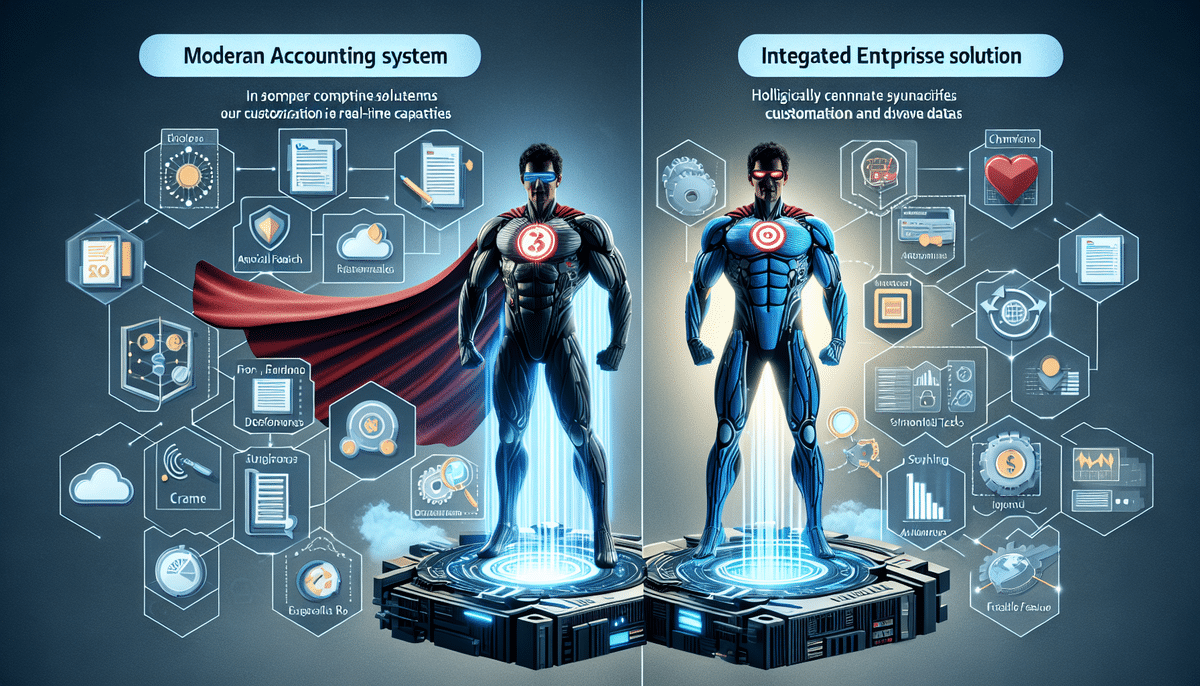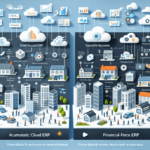Sage Intacct vs FinancialForce ERP: Comprehensive Comparison for Your Business
Choosing the right Enterprise Resource Planning (ERP) solution is crucial for streamlining your business's financial operations. Two leading options in the market are Sage Intacct and FinancialForce ERP. This article delves into their features, benefits, pricing, and more to help you determine which ERP system aligns best with your business needs.
Overview of Sage Intacct
Sage Intacct is a cloud-based financial management and ERP solution tailored for mid-sized businesses. Renowned for its robust financial capabilities, Sage Intacct helps automate critical financial processes, ensuring accuracy and efficiency.
Key Features of Sage Intacct
- Automated workflows
- Advanced financial reporting
- Customization options
- Multi-entity and global consolidations
- Real-time dashboards and analytics
Benefits and Scalability
Sage Intacct offers exceptional scalability, allowing businesses to adapt as they grow. Its cloud-based architecture ensures that as transaction volumes increase, the system can handle the additional load seamlessly. Additionally, Sage Intacct integrates with various third-party applications, including CRM and project management tools, providing a holistic view of business performance.
According to a Gartner report, Sage Intacct ranks highly for financial management capabilities among mid-sized ERP solutions.
Overview of FinancialForce ERP
FinancialForce ERP is a cloud-based solution built on the Salesforce platform, making it an ideal choice for businesses already utilizing Salesforce for their Customer Relationship Management (CRM) needs. It offers comprehensive financial management features designed to enhance operational efficiency.
Key Features of FinancialForce ERP
- Accounts payable and receivable
- Billing and invoicing
- Revenue recognition
- Project accounting
- Cash management
Benefits and Integration
One of FinancialForce ERP's standout benefits is its seamless integration with Salesforce, providing a unified platform for managing customer interactions and financial data. This integration facilitates real-time data access and enhances decision-making capabilities. Additionally, FinancialForce ERP offers customizable dashboards and reports, allowing businesses to monitor financial performance effectively.
Industry studies, such as those from Forrester, highlight FinancialForce ERP's strength in delivering integrated financial solutions for Salesforce users.
Comparative Analysis: Sage Intacct vs FinancialForce ERP
Integration with Salesforce
While both ERP systems offer integration capabilities, FinancialForce ERP is specifically designed to work seamlessly with Salesforce, providing a more cohesive experience for businesses already using Salesforce as their CRM. In contrast, Sage Intacct serves as a standalone financial management solution but can integrate with Salesforce through third-party connectors.
Market Presence and User Base
Sage Intacct has a longstanding presence in the ERP market with a large and diverse user base. Its established reputation makes it a trusted choice for many mid-sized businesses. FinancialForce ERP, while newer, leverages the Salesforce ecosystem to attract businesses that prioritize CRM integration and are looking for a unified platform.
Pricing Models
- Sage Intacct: Utilizes a subscription-based pricing model with tiers ranging from $400 to $1,500 per month, depending on the size and requirements of the business.
- FinancialForce ERP: Employs a usage-based pricing model where costs are determined by the number of users and the volume of data processed. This model can be more cost-effective for smaller businesses but may lead to higher expenses as usage scales.
For detailed pricing information, visit the respective Sage Intacct Pricing and FinancialForce ERP Pricing pages.
Customization and Automation
Sage Intacct offers extensive customization options, allowing businesses to tailor the software to their specific needs. Its focus on automation reduces manual data entry, enhancing accuracy and efficiency. On the other hand, FinancialForce ERP provides customization primarily through its integration with Salesforce, which may require more effort to align with unique business processes.
Implementation and Support
Deployment
Both Sage Intacct and FinancialForce ERP are cloud-based, facilitating quick deployment with minimal IT intervention. However, Sage Intacct is often praised for its intuitive user interface and ease of implementation, making it accessible for businesses without extensive IT resources.
Support and Training
- Sage Intacct:
- 24/7 customer support
- Comprehensive online documentation
- Dedicated implementation team
- FinancialForce ERP:
- Support during business hours
- Online documentation and resources
- Training and certification programs
Businesses operating across different time zones or requiring round-the-clock support may find Sage Intacct's offerings more advantageous.
User Experience
Sage Intacct is lauded for its user-friendly interface, making it accessible even for those without extensive accounting knowledge. Its intuitive design facilitates easy navigation and quick adoption. Conversely, FinancialForce ERP offers more advanced features, which can be beneficial for businesses with complex accounting requirements but may necessitate additional training for effective use.
Integration Capabilities
Integration is a critical factor in choosing an ERP system. Sage Intacct integrates with a wide array of third-party applications, including Salesforce and ADP, providing businesses with flexibility in their software ecosystem. FinancialForce ERP excels in integrating seamlessly with Salesforce, ensuring that customer and financial data are synchronized in real-time.
For more information on integrations, visit Sage Intacct Integrations and FinancialForce ERP Integrations.
Customization and Scalability
Sage Intacct offers robust customization options, allowing businesses to modify workflows, reports, and dashboards to fit their unique requirements. Its scalable architecture supports business growth, accommodating increasing transaction volumes and expanding operational needs.
FinancialForce ERP provides customization through its Salesforce foundation, which offers flexibility but may require additional configurations to meet specific business processes. Its scalability is closely tied to the Salesforce platform, making it a reliable choice for businesses already invested in Salesforce.
Making the Right Choice for Your Business
Deciding between Sage Intacct and FinancialForce ERP depends on your business's specific needs and existing software infrastructure:
- Sage Intacct: Ideal for businesses seeking a standalone financial management solution with high customization and scalability.
- FinancialForce ERP: Best suited for companies already using Salesforce as their CRM and looking for an integrated ERP solution.
Conclusion: Sage Intacct vs FinancialForce ERP
Both Sage Intacct and FinancialForce ERP offer comprehensive financial management solutions tailored to different business needs. Sage Intacct stands out for its robust standalone capabilities and scalability, making it a solid choice for mid-sized businesses aiming for growth. FinancialForce ERP, with its seamless Salesforce integration, is perfect for organizations deeply embedded in the Salesforce ecosystem seeking a unified platform for CRM and ERP.
By carefully assessing your business requirements, budget, and existing software infrastructure, you can make an informed decision that will enhance your financial operations and support your company's growth objectives.






















